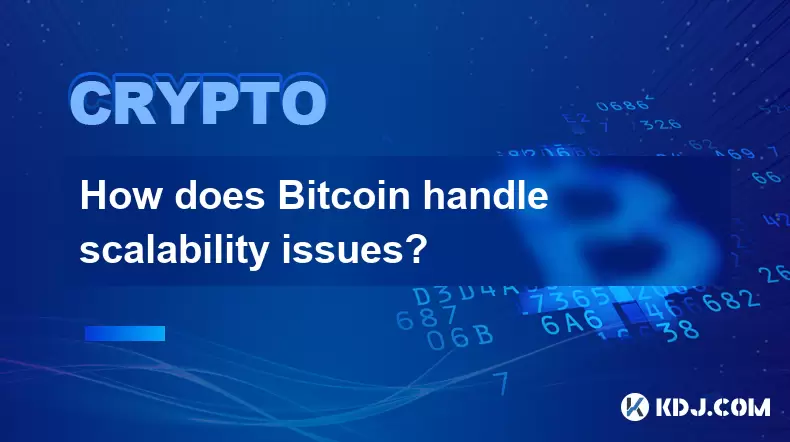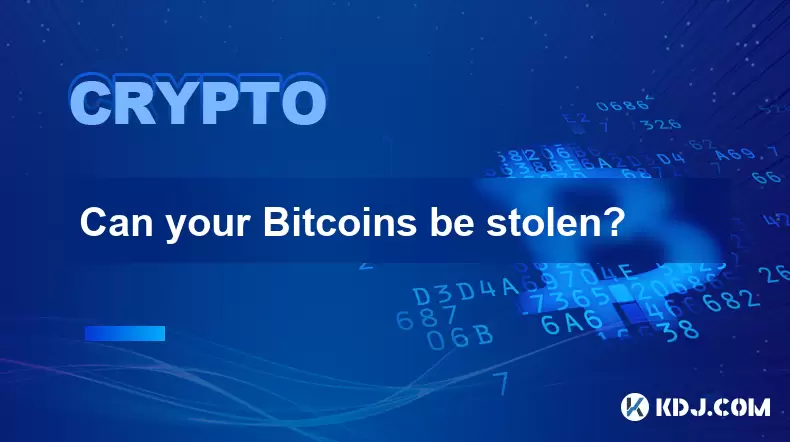-
 Bitcoin
Bitcoin $115100
1.27% -
 Ethereum
Ethereum $3675
2.71% -
 XRP
XRP $2.995
1.45% -
 Tether USDt
Tether USDt $1.000
0.02% -
 BNB
BNB $769.8
2.64% -
 Solana
Solana $168.0
3.25% -
 USDC
USDC $0.9999
-0.01% -
 TRON
TRON $0.3371
1.48% -
 Dogecoin
Dogecoin $0.2051
3.36% -
 Cardano
Cardano $0.7394
2.30% -
 Hyperliquid
Hyperliquid $38.15
0.42% -
 Stellar
Stellar $0.3966
-0.36% -
 Sui
Sui $3.486
2.93% -
 Chainlink
Chainlink $16.72
2.52% -
 Bitcoin Cash
Bitcoin Cash $568.0
4.36% -
 Hedera
Hedera $0.2440
2.59% -
 Ethena USDe
Ethena USDe $1.001
0.04% -
 Avalanche
Avalanche $22.16
2.06% -
 Litecoin
Litecoin $119.1
-0.73% -
 UNUS SED LEO
UNUS SED LEO $8.991
0.04% -
 Toncoin
Toncoin $3.232
-0.39% -
 Shiba Inu
Shiba Inu $0.00001233
2.82% -
 Uniswap
Uniswap $9.717
2.53% -
 Polkadot
Polkadot $3.664
1.85% -
 Dai
Dai $1.000
0.01% -
 Monero
Monero $281.2
-3.89% -
 Bitget Token
Bitget Token $4.350
1.55% -
 Cronos
Cronos $0.1428
5.07% -
 Pepe
Pepe $0.00001050
3.68% -
 Aave
Aave $262.3
3.54%
How does Bitcoin handle scalability issues?
Bitcoin's scalability is limited to ~7 TPS on-chain, but solutions like SegWit and the Lightning Network boost capacity, reduce fees, and enable faster transactions.
Aug 07, 2025 at 10:54 am

Understanding Bitcoin’s Scalability Challenge
Bitcoin’s design prioritizes decentralization, security, and immutability, but these principles come with trade-offs, particularly in transaction throughput. The base layer of Bitcoin, known as the Bitcoin blockchain, is limited by its block size and block time. Each block is capped at 1 megabyte (MB) in size and is mined approximately every 10 minutes. This constraint limits the network to processing roughly 7 transactions per second (TPS). In contrast, traditional payment systems like Visa can handle thousands of transactions per second. As demand for Bitcoin transactions increases, this limitation leads to network congestion, higher fees, and longer confirmation times. These issues are central to what is known as the scalability trilemma, where improving scalability often risks compromising decentralization or security.
Segregated Witness (SegWit): A Layer-One Upgrade
One of the most significant improvements to Bitcoin’s scalability came with the activation of Segregated Witness (SegWit) in August 2017. SegWit addressed scalability by modifying the structure of Bitcoin transactions. It does so by separating (or segregating) signature data (witness data) from the main transaction data. This change effectively increases the number of transactions that can fit into a single block without increasing the block size limit. The key mechanism is that witness data is counted at a lower weight under the new block weight system introduced by SegWit, allowing blocks to hold more transaction data while staying within the 4 million weight unit limit (equivalent to about 4 MB in practice). The benefits of SegWit include:
- Increased transaction capacity per block
- Reduced transaction fees due to more efficient block space usage
- Fixing transaction malleability, which was a prerequisite for the Lightning Network
- Enabling more efficient use of block space through better signature encoding
Users and wallets must support SegWit to take advantage of these improvements. Transactions sent from SegWit-enabled addresses (beginning with "bc1" or "3") benefit from lower fees and faster confirmations.
Lightning Network: Off-Chain Scaling Solution
The Lightning Network is a layer-two protocol built on top of Bitcoin that enables fast, low-cost transactions by moving most interactions off the main blockchain. It operates by creating bidirectional payment channels between participants. Once a channel is opened with an on-chain transaction, users can conduct an unlimited number of instant transactions between each other without broadcasting each one to the Bitcoin network. Only the final state of the channel is settled on-chain when it is closed.
To use the Lightning Network, users must:
- Install a Lightning-compatible wallet (e.g., Phoenix, Wallet of Satoshi, or Eclair)
- Fund a payment channel by sending Bitcoin to a multisig address on the blockchain
- Conduct instant peer-to-peer transactions within the network
- Close the channel to settle the final balance on the main chain
The network uses Hash Time-Locked Contracts (HTLCs) to enable payments across multiple hops, allowing users to transact even if they don’t have a direct channel. The Lightning Network dramatically increases scalability by reducing the number of transactions recorded on the blockchain, potentially enabling millions of TPS across the network if widely adopted.
Block Size Debates and Alternative Proposals
The debate over how to scale Bitcoin has led to various proposals over the years. One of the most controversial was Bitcoin Cash (BCH), which forked from Bitcoin in 2017 by increasing the block size to 8 MB (later increased further). Proponents argued that larger blocks would allow more transactions per block, directly increasing throughput. However, larger blocks require more storage and bandwidth, potentially leading to centralization risks as fewer nodes can afford to run full nodes.
Other proposals have included block weight increases, dynamic block sizing, and alternative consensus mechanisms, but these have not been adopted due to concerns about decentralization and security. The Bitcoin community generally favors conservative changes that maintain the network’s core principles. As a result, scaling efforts have focused more on layer-two solutions and efficiency improvements rather than increasing base-layer block sizes.
Future Upgrades and Efficiency Improvements
Bitcoin continues to evolve through soft forks and protocol upgrades that improve efficiency without altering the fundamental block size. One such upgrade is Taproot, activated in November 2021, which enhances privacy, reduces transaction data size, and lowers fees. Taproot combines multiple transaction types into a single signature format using Schnorr signatures and Merkelized Abstract Syntax Trees (MAST). This reduces the amount of data needed for complex transactions, freeing up block space for more transactions.
Another area of development is client-side block filtering (e.g., Neutrino) and compact block relay, which improve node performance and reduce bandwidth usage. These optimizations help maintain decentralization while supporting higher transaction volumes. Research into covenants and eltoo (a simplified channel update mechanism for Lightning) may further enhance scalability in the future, though they require careful implementation to avoid unintended consequences.
Frequently Asked Questions
What is the maximum number of transactions Bitcoin can process per second?
Bitcoin’s base layer can handle approximately 7 transactions per second under normal conditions. With SegWit adoption, this can increase to around 10–15 TPS due to more efficient block space usage. The actual number varies based on transaction size and network conditions.
How do transaction fees relate to scalability?
When the network is congested and block space is limited, users bid higher fees to prioritize their transactions. This fee market is a direct result of scalability constraints. Solutions like SegWit and Lightning reduce fees by increasing capacity or moving transactions off-chain.
Can anyone run a Lightning Network node?
Yes, anyone can run a Lightning node by installing compatible software like LND, c-lightning, or Eclair. Users need a Bitcoin full node (optional but recommended), a static IP or Tor address, and some Bitcoin to fund channels. Running a node supports network decentralization and allows direct channel management.
Why doesn’t Bitcoin increase block size to solve scalability?
Increasing block size could lead to higher hardware requirements for running full nodes, risking centralization. Larger blocks require more bandwidth and storage, potentially excluding users with limited resources. The Bitcoin community prioritizes decentralization and security, favoring layer-two solutions over base-layer bloat.
Disclaimer:info@kdj.com
The information provided is not trading advice. kdj.com does not assume any responsibility for any investments made based on the information provided in this article. Cryptocurrencies are highly volatile and it is highly recommended that you invest with caution after thorough research!
If you believe that the content used on this website infringes your copyright, please contact us immediately (info@kdj.com) and we will delete it promptly.
- BlockDAG, Litecoin, and Cardano: Charting the Course in Crypto's Dynamic Waters
- 2025-08-07 09:09:06
- Fireverse Token: Igniting a Musical Revolution in Web3
- 2025-08-07 08:27:45
- Ethereum, L2 Withdrawals, and Decentralization: A New Yorker's Take
- 2025-08-07 08:32:33
- Avalanche vs. Ruvi AI: Daily Sales Tell a Story of Crypto Disruption
- 2025-08-07 06:29:35
- DeSoc: The Crypto to Buy Now for a Decentralized Future (and Maybe 43x Gains!)
- 2025-08-07 06:50:16
- Arctic Pablo Coin: Riding the Meme Coin Wave with a Deflationary Twist
- 2025-08-07 07:18:13
Related knowledge

How does Bitcoin handle scalability issues?
Aug 07,2025 at 10:54am
Understanding Bitcoin’s Scalability ChallengeBitcoin’s design prioritizes decentralization, security, and immutability, but these principles come with...

Do you need to understand technology to use Bitcoin?
Aug 07,2025 at 06:17am
Understanding the Basics of BitcoinTo engage with Bitcoin, one does not need a deep understanding of the underlying technology, much like how individu...

Can your Bitcoins be stolen?
Aug 07,2025 at 03:28am
Understanding the Security of Bitcoin OwnershipThe decentralized nature of Bitcoin means that no central authority controls the network, placing the r...

How does Bitcoin compare to gold?
Aug 07,2025 at 03:18am
Historical Context and Origins of Bitcoin and GoldUnderstanding the comparison between Bitcoin and gold begins with their origins and historical roles...

Can you lose money with Bitcoin?
Aug 07,2025 at 07:49am
Understanding the Volatility of BitcoinBitcoin is known for its extreme price volatility, which is one of the primary reasons investors can lose money...

How does Bitcoin function as a digital currency?
Aug 07,2025 at 02:50am
Understanding Bitcoin as a Digital CurrencyBitcoin operates as a decentralized digital currency, meaning it functions without a central authority such...

How does Bitcoin handle scalability issues?
Aug 07,2025 at 10:54am
Understanding Bitcoin’s Scalability ChallengeBitcoin’s design prioritizes decentralization, security, and immutability, but these principles come with...

Do you need to understand technology to use Bitcoin?
Aug 07,2025 at 06:17am
Understanding the Basics of BitcoinTo engage with Bitcoin, one does not need a deep understanding of the underlying technology, much like how individu...

Can your Bitcoins be stolen?
Aug 07,2025 at 03:28am
Understanding the Security of Bitcoin OwnershipThe decentralized nature of Bitcoin means that no central authority controls the network, placing the r...

How does Bitcoin compare to gold?
Aug 07,2025 at 03:18am
Historical Context and Origins of Bitcoin and GoldUnderstanding the comparison between Bitcoin and gold begins with their origins and historical roles...

Can you lose money with Bitcoin?
Aug 07,2025 at 07:49am
Understanding the Volatility of BitcoinBitcoin is known for its extreme price volatility, which is one of the primary reasons investors can lose money...

How does Bitcoin function as a digital currency?
Aug 07,2025 at 02:50am
Understanding Bitcoin as a Digital CurrencyBitcoin operates as a decentralized digital currency, meaning it functions without a central authority such...
See all articles

























































































